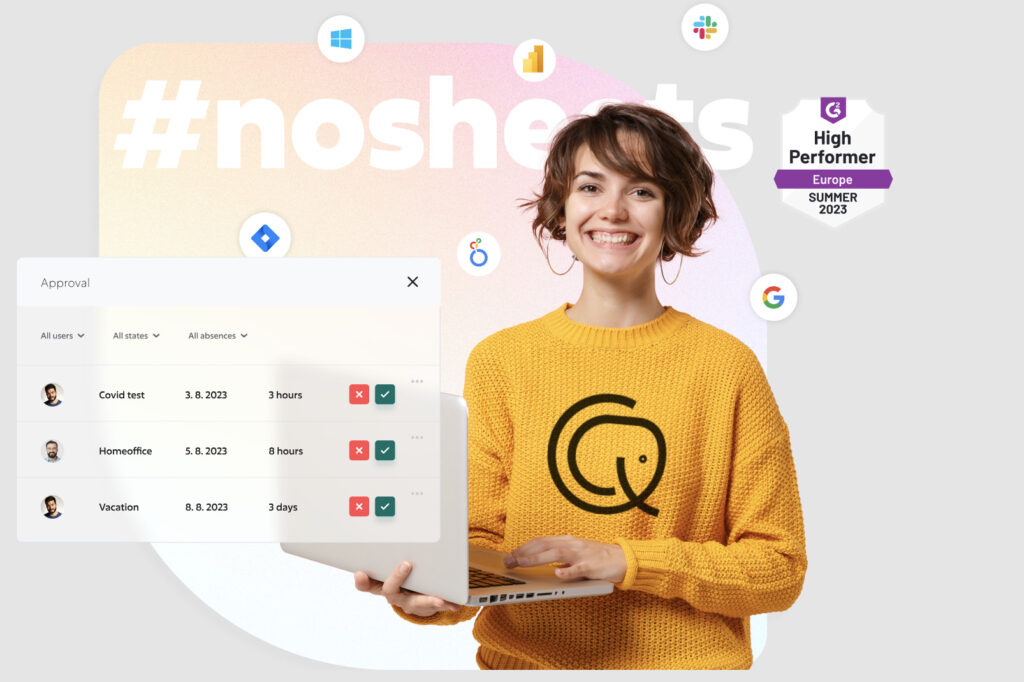Annual Leave
What is annual leave?
Annual leave is a cornerstone of work-life balance in the modern workplace. It grants employees the invaluable opportunity to step away from their professional duties and invest time in personal well-being and life outside of work. In this comprehensive guide, we delve into the intricacies of annual leave, exploring its definition, significance, benefits, and the tools available to manage it efficiently.

What is Annual Leave
Annual leave, commonly referred to as vacation time or paid time off (PTO), is a fundamental aspect of an organization’s leave policy. It provides both full-time and part-time employees with the opportunity to take time away from work, ensuring a balance between their professional and personal lives. Annual leave is a critical component of maintaining a healthy work-life equilibrium.
How does annual leave work?
Annual leave operates by granting a specific number of paid leave days or hours to eligible employees, in accordance with the company’s policies and the individual’s employment status. Full-time employees generally receive a more extensive allocation of annual leave hours compared to part-time or temporary employees. The accrual of annual leave varies based on factors such as the employee’s period of service and is an essential element of managing annual leave balances.
Why Annual Leave Matters and What is the Goal?
The significance of annual leave cannot be overstated in the context of employee well-being and organizational efficiency. The primary objective of annual leave is to provide employees with a designated period of rest and relaxation, allowing them to recharge and address personal matters. The main types of annual leave typically include paid vacation days, public holidays, and additional days for personal business or special occasions.
Annual leave plays a vital role in maintaining employee morale, productivity, and retention. Companies that value their employees’ personal time are more likely to retain a motivated and engaged workforce. For instance, during busy periods, employees can use their annual leave days to recharge and return to work refreshed and ready to contribute effectively.
What Benefits Does Annual Leave Bring?
The benefits of annual leave are multifaceted. Firstly, it enables employees to manage their work-life balance effectively, which can lead to reduced stress and a decreased likelihood of burnout. Annual leave also facilitates employees in taking much-needed breaks, ultimately resulting in increased productivity and job satisfaction upon their return to work. Additionally, it contributes to employee loyalty and retention, as companies that prioritize employee well-being often attract and retain top talent.
However, there are challenges associated with the management of annual leave, primarily for employers. These challenges include the need for effective leave tracking systems, ensuring workforce availability during peak vacation seasons, and addressing potential disruptions to business operations. Nevertheless, when managed efficiently, the advantages of annual leave far outweigh the challenges, benefiting both employees and organizations.

The Importance of the HR Software for Managing Annual Leave
In today’s fast-paced and dynamic work environment, the importance of reliable HR software cannot be overstated, especially when it comes to managing annual leave and other types of absence for both full-time employees and part-time employees. Solutions like Sloneek streamline the entire leave management process, from request submission to approval, making it efficient and error-free.
The platform provides employees with a user-friendly interface to request time off, view their leave balance, and access leave policies. For HR departments, it simplifies leave approval workflows, ensures compliance with company policies, and offers real-time visibility into leave accruals and usage.
Additionally, HR software can help organizations optimize staffing and resource allocation during peak leave seasons, ultimately enhancing workforce productivity and ensuring a seamless transition between employees’ time off and work responsibilities. By using advanced HR software like Sloneek, organizations can better prioritize employee well-being, reduce administrative burdens, and foster a more engaged and satisfied workforce.
Conclusion
In conclusion, annual leave is a crucial employee benefit that promotes a healthy work-life balance, employee well-being, and overall workplace productivity. Understanding your annual leave entitlement, the various types of leave available, and the advantages it offers is essential for both employees and employers. By effectively managing and utilizing annual leave, employees can experience improved mental and physical health, increased job satisfaction, and an enhanced overall quality of life.
FAQ’s
Q1: Are part-time employees eligible for annual leave?
A: Yes, part-time employees may be eligible for annual leave, but the number of leave hours or days they receive is typically prorated based on their working hours or employment contract terms. Eligibility criteria can vary between organizations.
Q2: How is the annual leave accrual rate determined?
A: The annual leave accrual rate is often determined by an employee’s period of service with the organization. It may increase with each year of service as outlined in the company’s leave policy.
Q3: Can federal employees receive a lump sum payment for unused annual leave?
A: Yes, federal employees may be eligible to receive a lump sum payment for unused annual leave upon retirement or resignation. The rules governing this payment are outlined in federal regulations.
Q4: What should I do if I have questions about annual leave in my organization?
A: You can consult your employee handbook or contact your HR department for specific information about annual leave policies, entitlements, and procedures. Additionally, you may reach out to your HR department using your company-provided email address for assistance.
Q5: What is the difference between annual leave and public holidays?
A: Annual leave is time off that employees can take at their discretion, while public holidays are designated days on which businesses typically close, and employees are entitled to a day off with pay. Public holidays are usually determined by the government or local authorities.
Q6: How can I manage annual leave during a busy period at work?
A: Managing annual leave during busy periods can be challenging. It’s advisable to plan annual leave well in advance, coordinate with colleagues to ensure adequate coverage, and follow your organization’s leave request and approval procedures.
We are here for you
Can we help you?
Our experts will answer questions, show you Sloneek , and help modernize your HR.
- Superior onboarding
- Introduction of all functionalities
- Presentation and offer tailored to your HR
- Answer any questions






